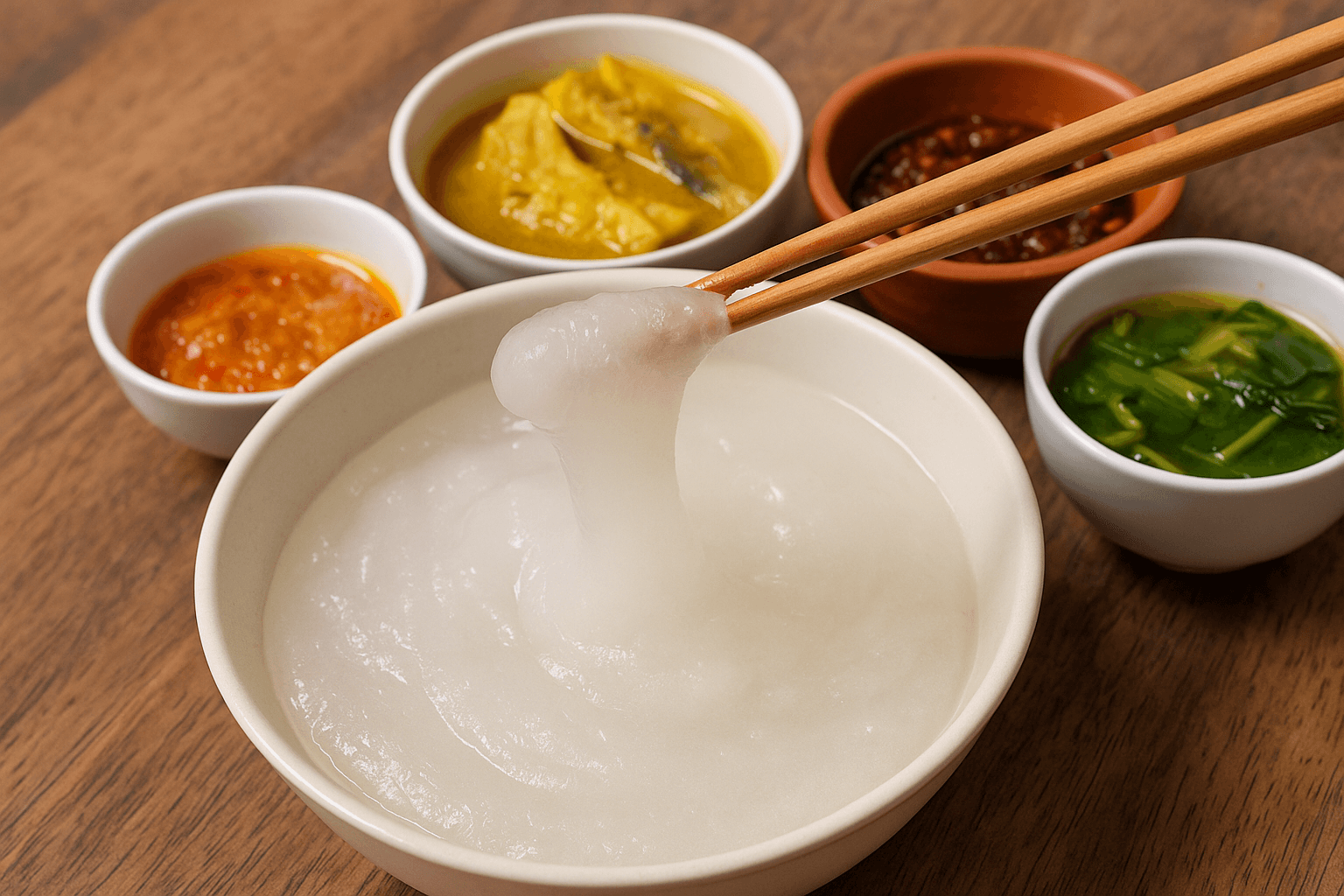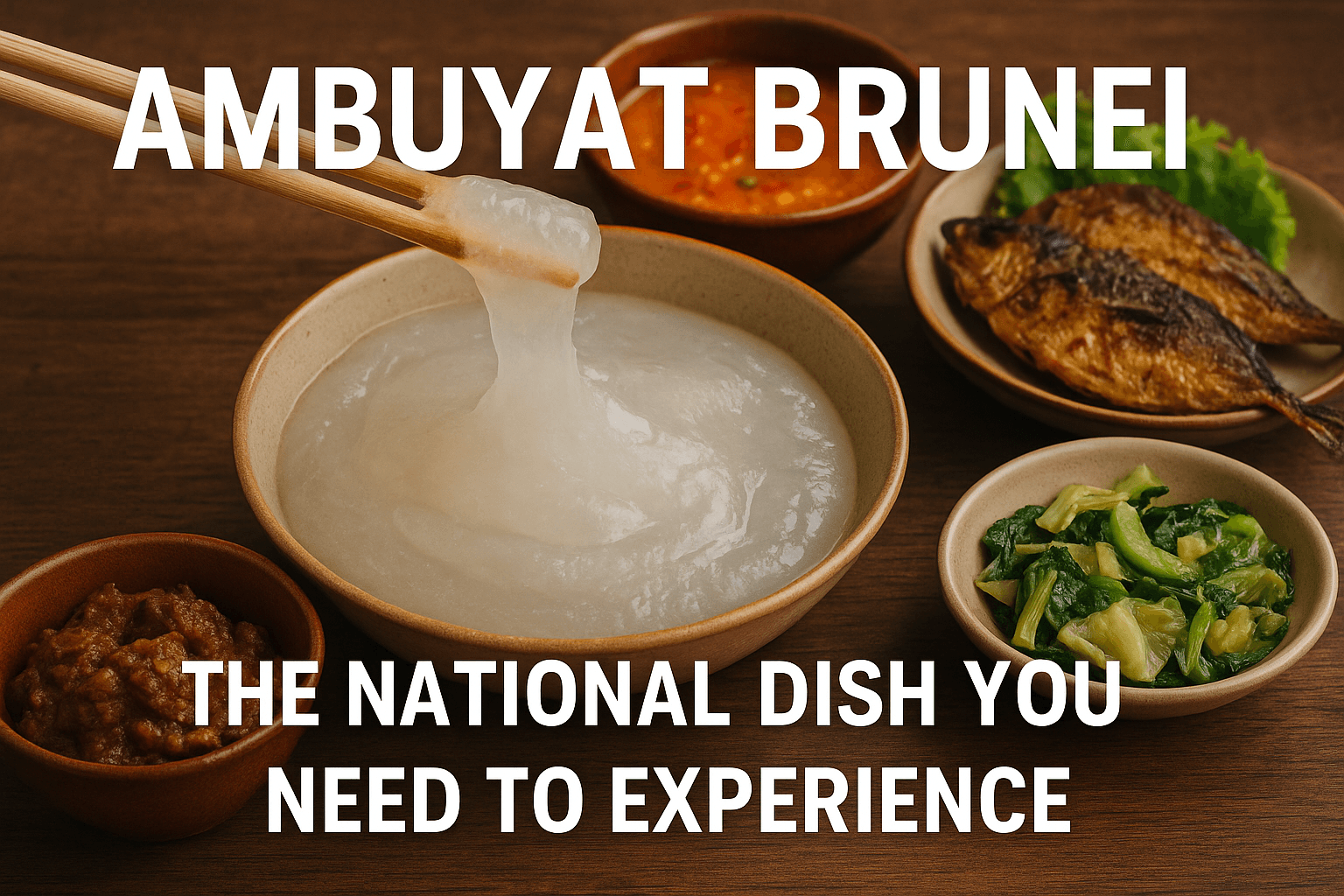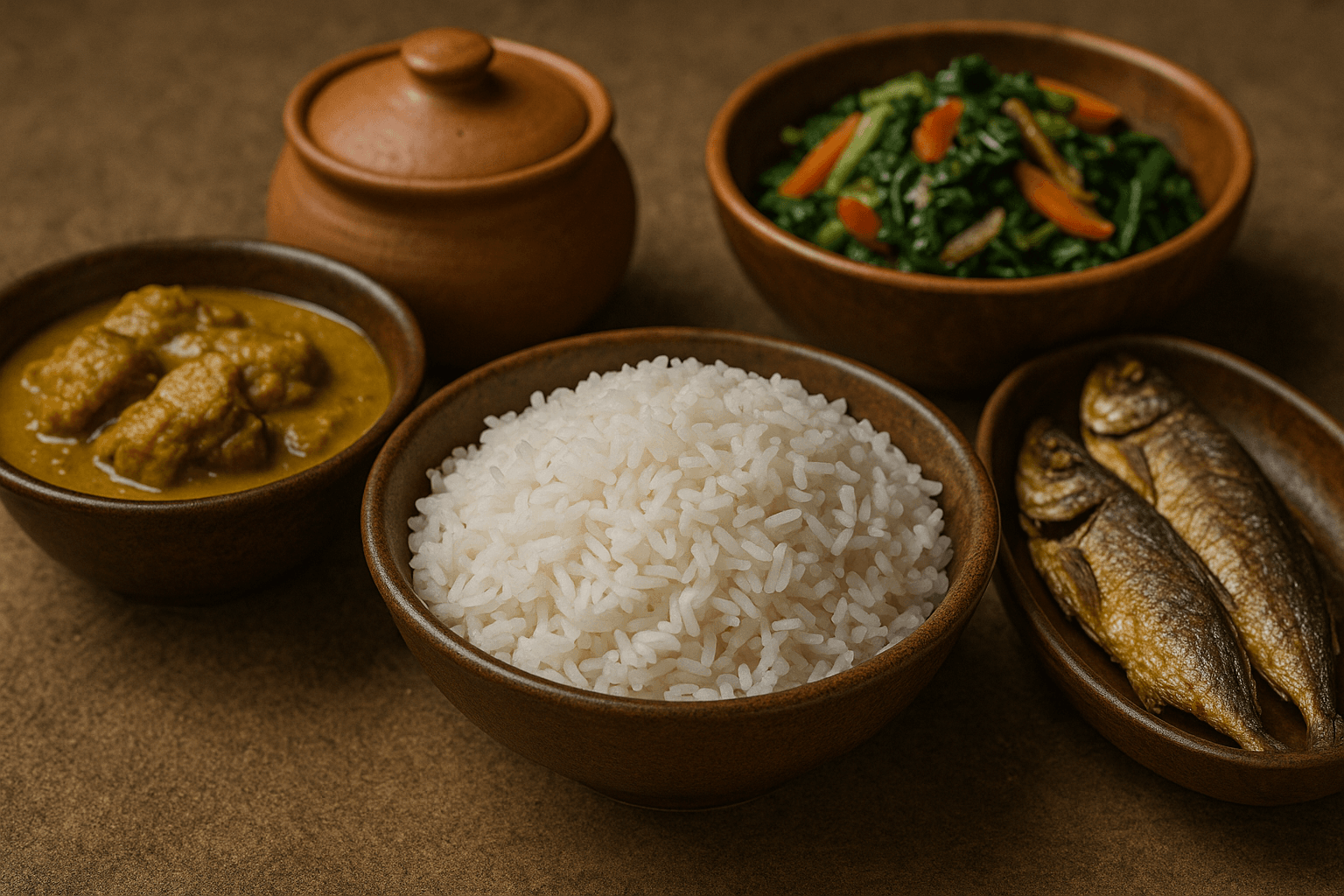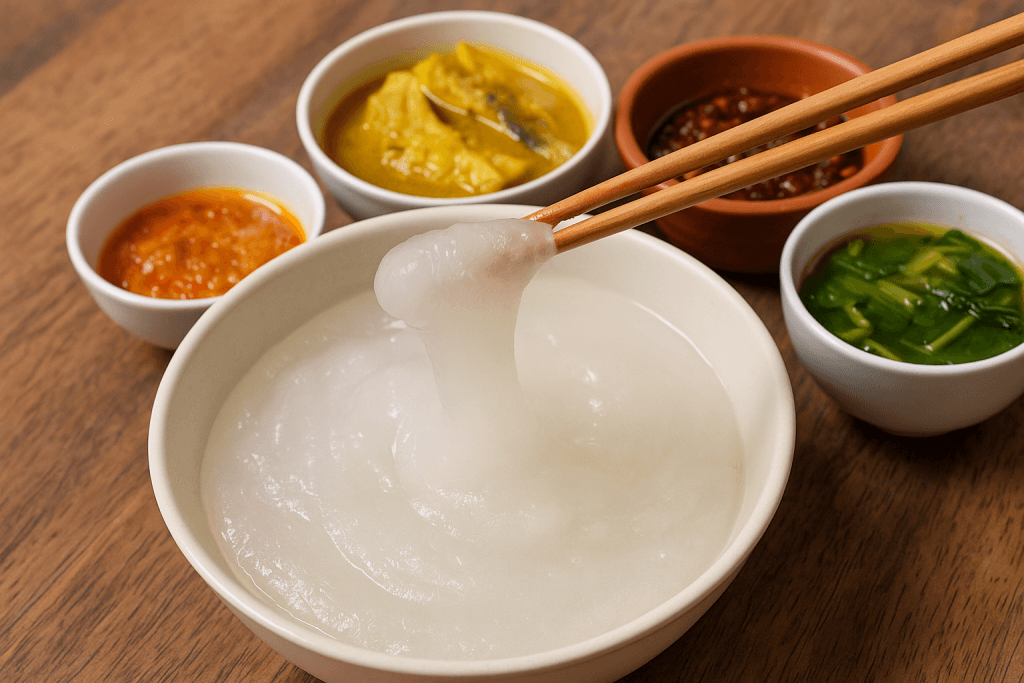Food is not only about taste but also about culture, tradition, and identity. In the heart of Southeast Asia, one dish has captured the essence of Brunei’s culinary heritage: Ambuyat Brunei. Often considered the national dish, this sticky and starchy delicacy is more than just a meal. It is an experience, a ritual, and a celebration of Bruneian identity. To truly appreciate the flavors of Brunei, you must learn how to eat Ambuyat Brunei like a local.
This article takes you on a journey of understanding the origins, the preparation, the accompaniments, and the cultural significance of Ambuyat Brunei. By the end, you will not only know the correct way to enjoy it but also why it remains one of the most iconic dishes of Brunei Darussalam.

The Origins of Ambuyat Brunei
Historical Roots
Ambuyat Brunei dates back centuries when the people of the Sultanate relied on sago palms as a staple food source. During times of scarcity, the starchy substance extracted from sago trunks became a lifesaver. It evolved from survival food into a celebrated national dish enjoyed during family meals and cultural festivals.
Cultural Identity
Today, Ambuyat Brunei represents unity and tradition. Eating it is a communal activity, emphasizing sharing and togetherness. It highlights the resourcefulness of Bruneian people and reflects their ability to turn humble ingredients into an extraordinary culinary symbol.
Understanding Ambuyat Brunei
What It Is
Ambuyat Brunei is a starchy paste made from sago flour mixed with boiling water. The result is a sticky, glue-like substance with a neutral taste. While it might seem simple, the uniqueness lies in how it is eaten and what accompanies it.
Flavor Profile
On its own, Ambuyat Brunei is bland. Its magic comes alive when dipped into flavorful side dishes called “cacah.” These dips are tangy, spicy, or savory, transforming each bite into a burst of taste.
Tools for Eating Ambuyat Brunei
Locals use a special utensil called a candasa. It resembles a pair of wooden chopsticks joined at the top, forming a tweezer-like tool. Unlike chopsticks, it is designed to scoop and roll sticky portions of Ambuyat Brunei. Learning to handle the candasa correctly is essential if you want to eat like a true Bruneian.

The Ritual of Eating Ambuyat Brunei
Step 1: Preparing the Dish
The sago flour is placed in a bowl, and boiling water is poured gradually. Stirring continues until the mixture turns into a thick paste. This preparation is usually done right before serving to ensure the perfect sticky consistency.
Step 2: Using the Candasa
To eat Ambuyat Brunei, pinch the candasa into the sticky paste, twist it, and roll until you have a bite-sized portion. Mastering this technique takes practice but is part of the fun.
Step 3: Dipping into Cacah
Each rolled ball of Ambuyat Brunei is dipped into a cacah. Popular options include:
Binjai dip (a tangy mango-like fruit sauce)
Tempoyak dip (fermented durian with chili)
Fish curry or sambal (spicy condiments)
Step 4: Eating with the Right Pace
Locals savor Ambuyat Brunei slowly, balancing sticky textures with explosive dips. The process is deliberate, communal, and respectful of tradition.
Why Locals Love Ambuyat Brunei
Cultural Pride – Eating Ambuyat Brunei is a way of preserving heritage.
Communal Bonding – Shared meals strengthen family and community ties.
Healthy Simplicity – Made from sago starch, it is light, gluten-free, and easily digestible.
Flavor Variety – The dips allow endless combinations of tastes, from sweet to spicy.
The Social Role of Ambuyat Brunei
In Brunei, food is central to hospitality. When guests arrive, serving Ambuyat Brunei demonstrates generosity and respect. At weddings, religious celebrations, or cultural festivals, the dish symbolizes unity. It is not just food but a cultural performance connecting generations.
Where to Experience Ambuyat Brunei
Though it is homemade in many households, visitors can find authentic Ambuyat Brunei in traditional restaurants, local eateries, and food festivals. Street food stalls and heritage markets also serve it with a wide selection of dips. For travelers, this is the ultimate chance to immerse in Bruneian culinary culture.
Pairings That Elevate Ambuyat Brunei
To fully enjoy Ambuyat Brunei, you must understand its pairings. These side dishes bring balance:
Grilled fish – smoky flavors complement the bland starch.
Spicy sambal – chili heat intensifies each bite.
Vegetable curries – rich sauces coat the sticky paste perfectly.
Tempoyak – strong and fermented, ideal for adventurous palates.

Tips for Eating Ambuyat Brunei Like a Local
Master the candasa technique – Practice rolling until smooth.
Mix and match dips – Try different cacah for diverse flavors.
Share with others – Eating together enhances the experience.
Respect tradition – Approach the meal as a cultural practice, not just food.
Ambuyat and Regional Connections
While Ambuyat Brunei is most strongly tied to Brunei, similar sago-based dishes exist in neighboring regions of Sabah and Sarawak in Malaysia. However, Brunei has elevated it into a national emblem, distinguishing its culinary culture from its neighbors.
Global Relevance of Ambuyat Brunei
With the rise of culinary tourism, more international visitors seek authentic food experiences. Ambuyat Brunei stands out because it is interactive, symbolic, and unlike any dish in the Western world. Travel bloggers, chefs, and food enthusiasts often describe it as a must-try when visiting Brunei.
The Symbolism of Eating Together
Beyond flavor, Ambuyat Brunei teaches patience, sharing, and unity. It encourages slowing down, connecting with people around the table, and respecting cultural practices. To eat like a local means to embrace not only the food but also the values it represents.

